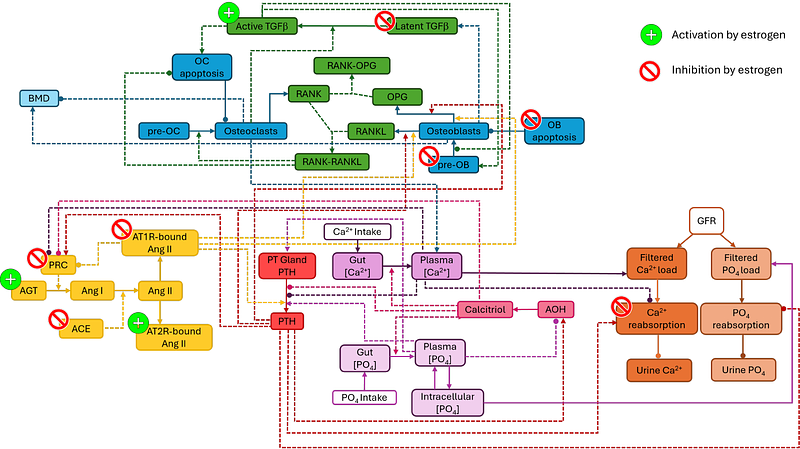A physiology-based mathematical model of the renin-angiotensin system, bone remodeling, and calcium homeostasis: Effects of estrogen and renin-angiotensin system inhibitors

A physiology-based mathematical model of the renin-angiotensin system, bone remodeling, and calcium homeostasis: Effects of estrogen and renin-angiotensin system inhibitors
Stadt, M.; Layton, A. T.
AbstractDuring menopause, estrogen levels decline significantly, leading to substantial physiological changes due to estrogen\'s regulatory role in various systems. In particular, estrogen helps prevent excessive bone resorption by its impact on bone remodeling. When estrogen levels decrease, bone resorption increases, often resulting in weakened bones and osteoporosis in post-menopausal women. Experimental studies have also shown that estrogen regulates the renin-angiotensin system (RAS), a hormone system involved in many physiological processes, including blood pressure regulation. Additionally, the RAS has an interconnected relationship with calcium regulatory and bone remodeling systems. Given these dynamic interplays, how would perturbations in one system affect the others? To answer that question, we developed a physiology-based mathematical model that simulates the interactions of estrogen, key RAS components, calcium regulation, and bone remodeling. Through sensitivity analysis and model simulations, we investigated how declining estrogen levels affect the RAS and bone mineral density. Furthermore, we quantified how RAS inhibitors, specifically angiotensin-converting enzyme inhibitors and angiotensin receptor blockers, may increase bone density during post-menopausal estrogen decline.